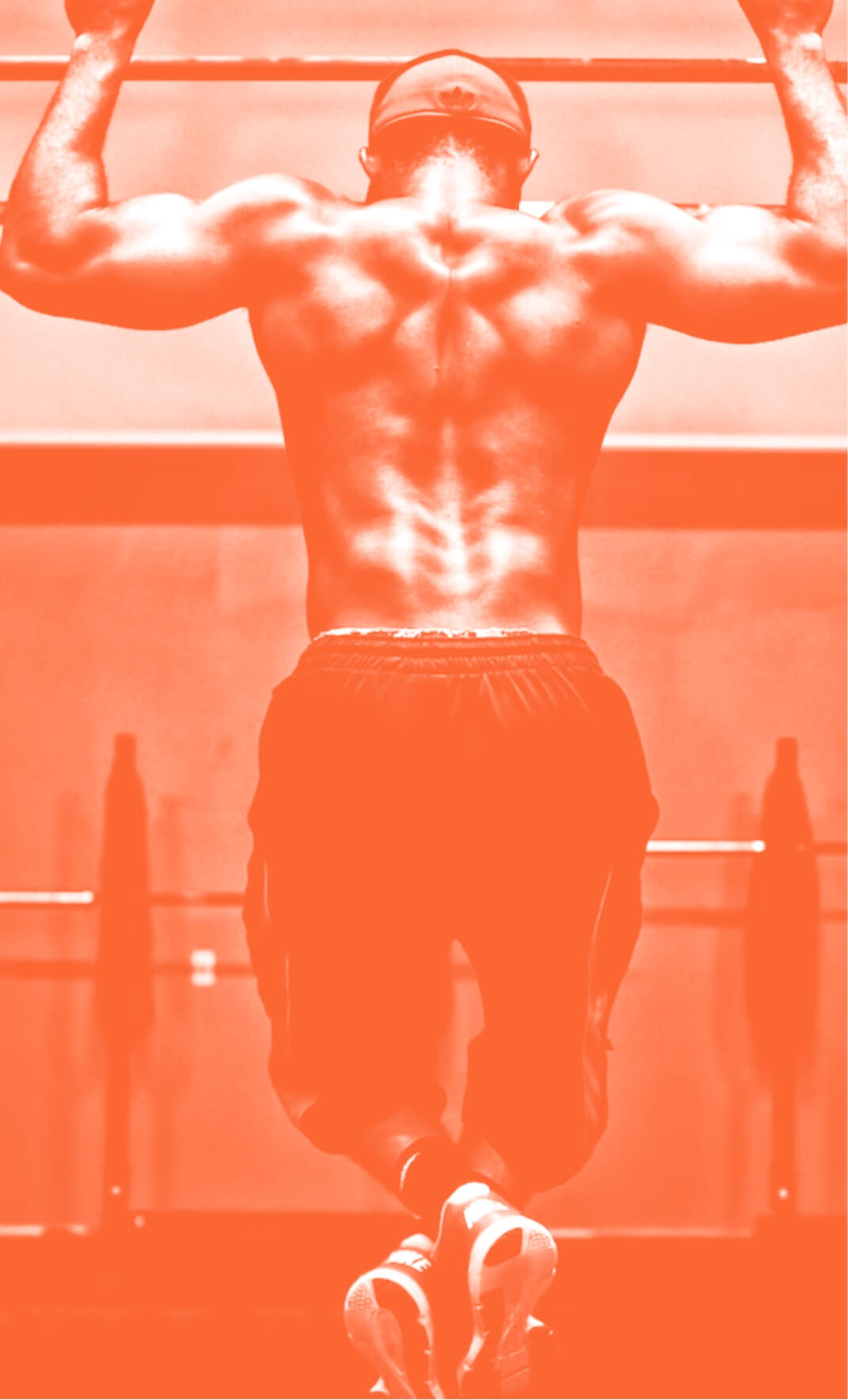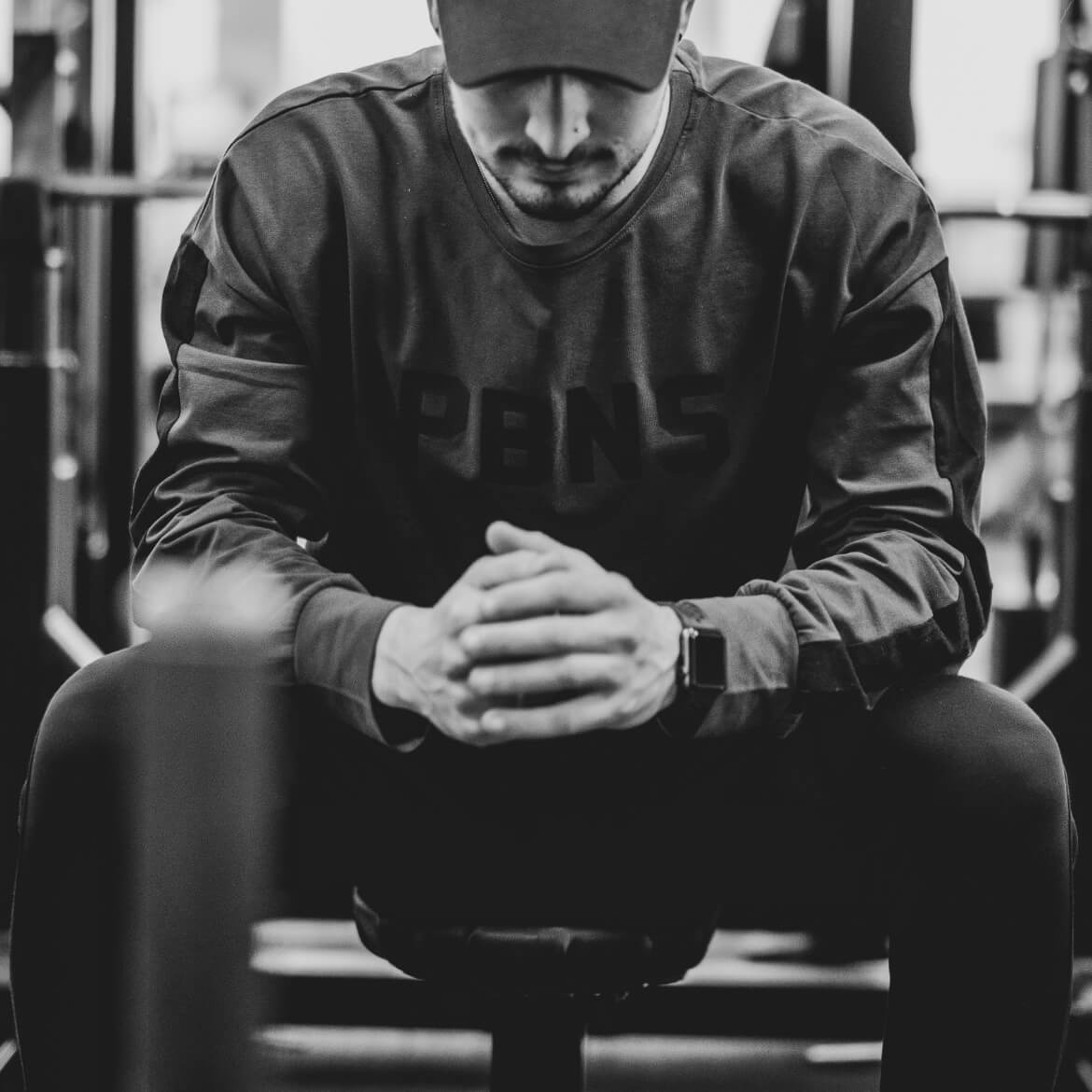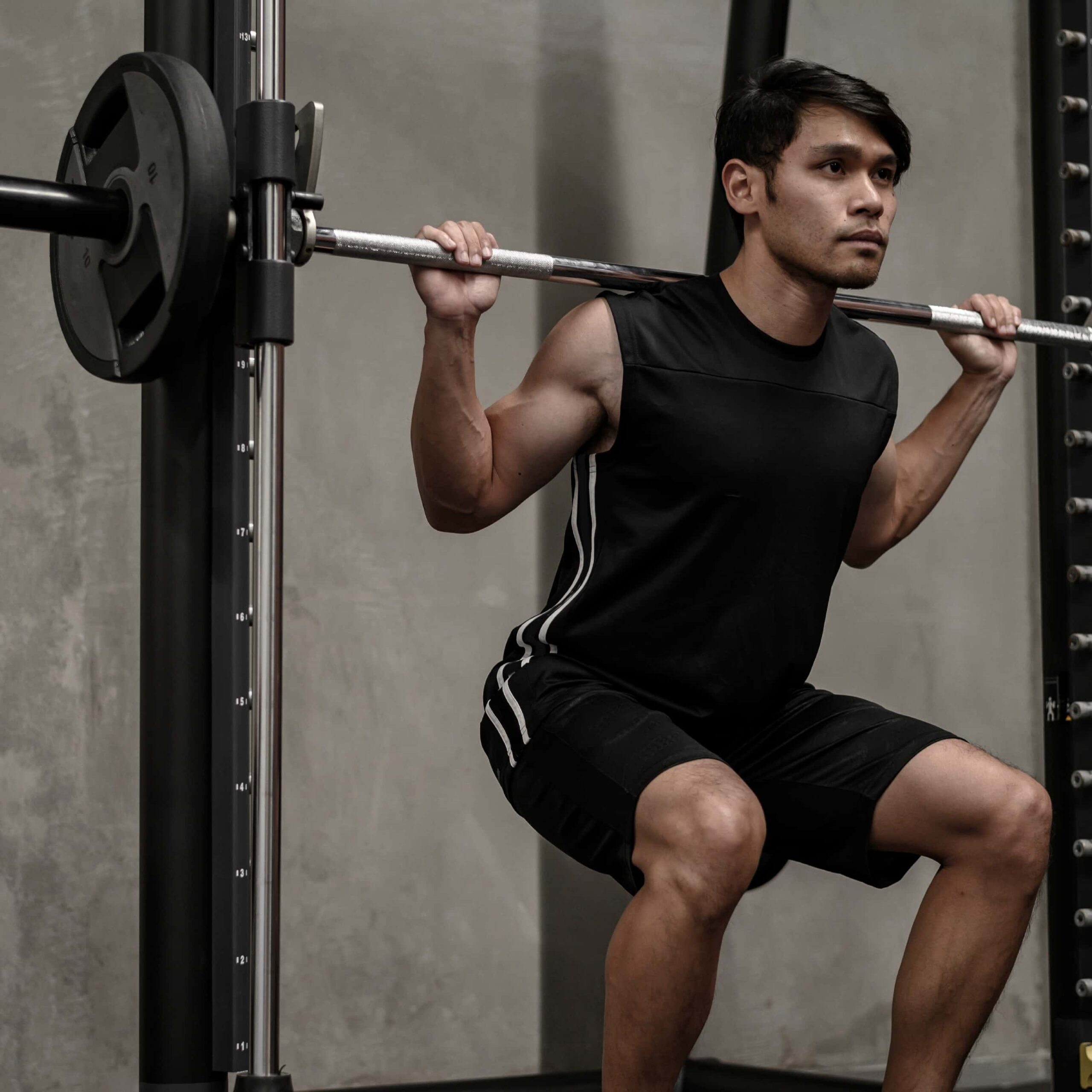Guide To Buying: Weight Bench Edition
30th Aug 19

Smart move! You’ve taken a shine to the dependable weight bench; there’s a good reason it’s the very bedrock of weight training; its tried and tested effectiveness spans over decades. They were originally designed for the bench press, but now they’ve now transformed into much more.
There’s a multitude of distinctive styles, each with its own merits and capabilities; this guide aims to break down the many different types of benches to empower you to venture out and identify exactly what models suit your needs perfectly; let’s get into it.
Want to move fast? Jump to the right section below.
- What You’re Looking to Use It For
- What Types of Weight Bench Are There?
- What To Look For When Buying a Weight Bench
What You’re Looking to Use It For
The best starting point we can make is thinking of what you need from a weight bench and where you are in your training. Think about whether your goal is building muscle, toning up or getting stronger, would you like to use a barbell or prefer dumbbells? These elements will help streamline your decisions.
What Types of Weight Bench Are There?
Utility Weight Benches
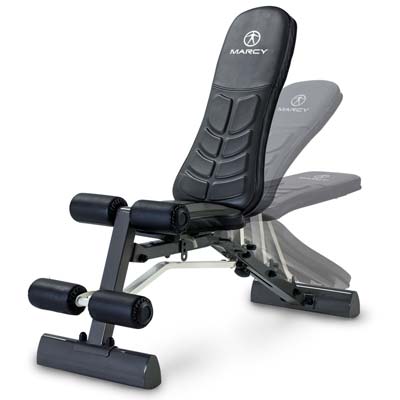
Possibly the most versatile of all the designs. Utility benches are amazing at adapting to a whole range of different uses; their backrests should adjust from a fully upright angle all the way down to decline, or flat at least.
They link up perfectly with a pair of dumbbells for countless free weight exercises, and you can slide them inside a rack for chest and shoulder presses. If you’re not sure what your goals are or need a bench that can change depending on your needs, this is the most flexible option.
What They’re Good For
- It can be used for building muscle, toning or strength development
- Beginners, regular or advanced users can use it
- Adapting to a range of different purposes
- Combining with a pair of dumbbells
- It can be used with a freestanding rack for barbell exercises
- Targeting a wide range of muscle groups
What They’re Not Designed For
- Using extremely heavyweights
- Feeling as robust as a fixed bench that doesn’t adjust
- Being as safe to use with a barbell as a bench with a rack attached
Exercise Capabilities (When Used with Dumbbells)
- Chest: Chest press (multiples angles), chest flyes (multiple angles), dumbbell pullovers
- Back: Dumbbell pullover, seated rows, single-arm rows
- Shoulders: Seated shoulder press, reverse flyes, side lateral raises, front raises
- Biceps (Arms): Single arm preacher curl, seated bicep curl, seated hammer curl
- Triceps (Arms): Tricep press, overhead extension, tricep kickbacks
- Legs: Bulgarian split squat, bench box jumps, dumbbell step-ups
- Abdominals: Reverse crunches, decline sit-ups, leg raises, side twists
Budget
- Starters: £50 – £100
- Intermediates: £100 – £200
- Advanced: £200 – £400
Flat Weight Benches
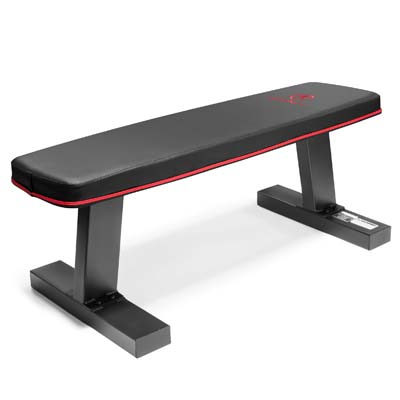
Similar to utility benches without the ability to adjust, they are set in a fixed flat position. So why would you possibly want a flat bench? The benefit of a fixed position comes down to durability; with a sheer solid framework and no adjustment pin, you’ve got yourself one rock-solid piece of kit.
The flip side is they don’t have the same versatility for exercises because they lack adjustment, but they’re still fantastic for using with dumbbells and sliding inside a rack.
What They’re Good For
- If you need an extremely robust bench
- Feeling safe and secure
- It can be used for building muscle, toning or strength development
- Beginners, regular or advanced users can use it
- Combining with a pair of dumbbells
- It can be used with a freestanding rack for a flat bench press
What They’re Not Designed For
- Adjusting to multiple angles
- Targeting different angles of your chest
- Covering a vast range of exercises to hit every muscle
Exercise Capabilities (When Used with Dumbbells)
- Chest: Chest press (flat only), chest flyes (flat only), dumbbell pullovers
- Back: Dumbbell pullover, single-arm rows
- Shoulders: Seated shoulder press, side lateral raises, front raises
- Biceps (Arms): seated bicep curl, seated hammer curl
- Triceps (Arms): Tricep press, overhead extension
- Legs: Bulgarian split squat, bench box jumps, dumbbell step-ups
- Abdominals: Reverse crunches, leg raises
Budget
- Starters: £40 – £80
- Intermediates: £80 – £150
- Advanced: £150 – £300
Barbell Weight Bench

Possibly the most recognisable design, a barbell bench embodies a flat or utility-style model with the addition of a rack bolted to the rear frame. This safely aligns you to bench press with a barbell on the rack.
Some models have an adjustable design fixed to the rack, whilst others (normally commercial) are fixed in either incline, decline, upright or flat angles. Many home-use models come with a leg developer and sometimes an arm curl attachment on the front. Both are great additional exercises to have available.
They can be a real minefield; different width racks hold different length bars, so we’re going to break this down and demystify things here.
Standard Width (Narrow) Rack Barbell Benches
These are your entry-level starter racks. The uprights are spaced closest together of all the models. This prevents you from using a wide grip position on the barbell, which is not advisable anyway, as it can put additional strain on your shoulder.
They’re ideal if you’re a beginner, modest weight loads aren’t suitable for advanced lifters, and the benches are smaller in nature. If you’re above 6ft, we wouldn’t recommend one.
Standard-width racks are designed to hold 5ft long barbells. This means the area to hold weight plates on should fit nicely outside the rack uprights.
Mid-Width Rack Barbell Benches
Quite the all-rounders, mid-width designs can be used by any level of weight lifter. They will generally be a little more robust and larger in size to accommodate taller users more than the standard width.
Mid-Width benches must be used with a minimum 6ft long barbell.
Olympic Width Rack Barbell Benches
If you want to feel like you’re training on a commercial weight bench, these are the ticket. Olympic width is prevalent throughout gyms worldwide. Advanced lifters will ideally want an Olympic rack. They boast the heaviest load capacities, robust frames and advanced safety features. This isn’t to say starters or intermediates should stay away, and they are equally as suitable.
Olympic racks can only take 7ft long barbells, which is the standard-length barbell for Olympic weight lifting hence the origins of the name.
What They’re Good For
- Developing muscle and strength in your upper body
- A safe way to load the weights when you’re finished
- Offering different levels to suit everyone
- Designed for building muscle and strength development
- Feeling safe to use
What They’re Not Designed For
- Combining with dumbbells
- Extensively exercising your lower body
- Toning up
Exercise Capabilities (When Used with Barbell)
- Chest: incline, flat and decline bench press
- Biceps (Arms): Preacher arm curl
- Triceps (Arms): Tricep press
- Legs: Leg curls, leg extensions
Budget
- Standard Width: £100 – £250
- Mid-Width: £200 – £400
- Olympic: £250 – £500
Abdominal & Core Trainers / Weight Benches

If your focus is a rock-solid midsection and a popping six-pack, look no further. They’re specifically designed for exercises like decline crunches (upper abs), reverse crunches (lower abs) and hyperextensions (lower back).
Core trainers are built for this one purpose and aren’t great for much else, a strong core is the most important foundation to prevent injuries through all your training, so they aren’t to be dismissed.
What They’re Good For
- Targeted exercises for your abdominals and lower back
- Developing core strength to prevent injuries
What They’re Not Designed For
- A diverse range of exercises
- Combining with dumbbells, barbells or racks
Budget
- Beginners: £40 – £60
- Intermediates: £60 – £120
- Advanced: £120 – £300
What To Look For When Buying a Weight Bench
By now, hopefully, you should feel more confident, if not a little overwhelmed by all the weight benches to choose from. In this section, we’ll help you drill down some key elements. Some may only apply to certain styles, but we’ll highlight these for you.
Exercise Capabilities
Are there any specific exercises you want? Do you want an arm curl for bulging biceps? Or an upright angle to build shoulders like boulders? Who knows, you know! Have a little think about what your primary needs for the bench are, and make sure it has the capabilities to do them if you’re unsure; there’s no harm in asking.
Size
Will this thing fit? Are you tight on space? Dimensions should be one of the first things you check, they can vary tremendously in size, and there will be one that fits your space, no matter how large or small.
If space is an issue, there are a lot of folding models knocking around. A quick point to note, folding designs can be notoriously flimsy. It’s worth investing in a slightly beefier model that still folds to guarantee it feels solid.
Weight Load
If you check for one thing only, please make sure it’s the weight load. Imagine if you start developing your strength only to realise you’ve hit the load capacity and then need to upgrade after only months of use; not cool.
Loads are generally broken down into the ‘user’ and ‘weight load’. The user weight load is the capacity allowed for the individual using the bench. The weight load indicates the amount of weight you can lift on top of the user load.
Top tip! Sneaky manufacturers may advertise ‘total load capacity’ to lure you in. Bear in mind this accounts for the user and weight load together.
One more point of weight loads, they’re a wonderful indicator of bench build and craftsmanship. Simply, the heavier the load capacity, the more robust it will be. A starting point is looking for a 100kg weight load capacity, at least with the same for user weight.
Weight Plates & Barbell

This only applies to barbell racks. Flat and utility benches need any dumbbells, and you’re sorted. Refer to our earlier guide on racks’ width to make sure you choose the right weight set to complement your choice.
Secondly, the type of weight is essential. Weight plates come in two sizes; this is to do with the centre hole’s diameter on them. 1-inch standard and 2-inch Olympic are the predominant options, the manufacturer’s description should always state which to use, and some can even use both. Generally, 1-inch plates are better for standard benches, 2-inch plates for Olympic and either for mid-width.
We can probably contribute to reducing co2 emissions by simply selecting the right weight set the first time. The volume of customer collections we have for weights that don’t fit is staggering. We’re doing our bit for the environment by helping you nail it in one!
Seat Adjustments
We love adjustable benches. They take up no more space and boost your exercise options. Check for how many adjustment options each model has. They should at least have incline and flat angles. It’s also great to have an upright and decline angle. We have listed the primary benefits and purposes of each angle below to explain the benefits:
- Flat Angle: Great for all manner of exercises and general use, targeting your middle chest
- Incline Angle: For targeting your upper chest with a bench press
- Decline Angle: For targeting your lower chest with a bench press
- Upright Angle: For targeting your shoulders with an overhead press
Rack
A great option for chest and shoulder development is a bench with a rack. Some racks will have a fixed height. These are usually starter models; more expensive options will have adjustable heights and ‘bar catchers’. These are adjustable pegs that hold the barbell. Some come with additional safety pegs positioned lower down as an extra precaution if you’re exercising solo. They’re an excellent feature to have and worth considering.
Height-adjustable racks are favourable to align you perfectly for pressing, though fixed ones get the job done for entry-level to moderate use.
Top tip! A few racks now have reversible pegs at the rear to double the bench as a squat rack for the single greatest exercise known to humankind.
Upholstery
Perhaps not your number one consideration but hear us out. We’ve used equipment with thin padding and felt the plywood digging its way into our backs, all the while trying to concentrate and chalking up a great workout, not happening.
We’ve found at least 1.5 inches of thick upholstery will support you properly and feel comfortable to use.
Storage Posts
These are nice to have, though, because weights sprawling over the floor are a disaster waiting to happen. Your back will also thank you for having an easy area to swap and store plates. A couple of storage posts at the rear are worth looking out for and could be the deciding factor if you’re torn between a couple of options.
Congratulations! You are now officially a weight bench aficionado ready to venture off, using your crack detective skills to root out the unworthy and narrow down your ideal weight training companion for years to come.

Before beginning any exercise or nutrition program, consult your physician, doctor or other professional. This is especially important for individuals over the age of 35 or persons with pre-existing health problems. Exercise.co.uk assumes no responsibility for personal injury or property damage sustained using our advice.
If you experience dizziness, nausea, chest pain, or any other abnormal symptoms, stop the workout at once and consult a physician or doctor immediately.

